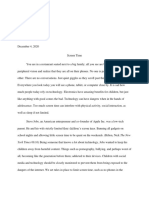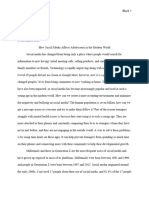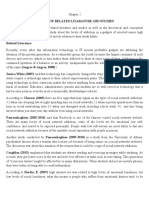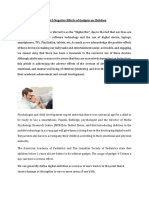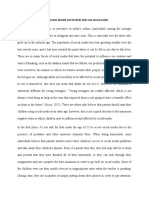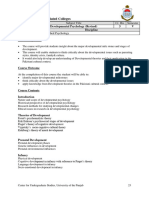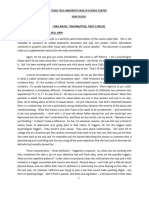0% found this document useful (0 votes)
341 views8 pagesDigital Boundaries for Kids' Health
The document discusses the effects of excessive technology and screen use on childhood development. It notes that constant early exposure to screens can negatively impact social skills, mental health, attention span, and sleep. While technology offers conveniences, the document argues it is important for parents to set boundaries and limits on screen time to allow children to develop properly without long-term health issues.
Uploaded by
api-692563740Copyright
© © All Rights Reserved
We take content rights seriously. If you suspect this is your content, claim it here.
Available Formats
Download as PDF, TXT or read online on Scribd
0% found this document useful (0 votes)
341 views8 pagesDigital Boundaries for Kids' Health
The document discusses the effects of excessive technology and screen use on childhood development. It notes that constant early exposure to screens can negatively impact social skills, mental health, attention span, and sleep. While technology offers conveniences, the document argues it is important for parents to set boundaries and limits on screen time to allow children to develop properly without long-term health issues.
Uploaded by
api-692563740Copyright
© © All Rights Reserved
We take content rights seriously. If you suspect this is your content, claim it here.
Available Formats
Download as PDF, TXT or read online on Scribd
/ 8










